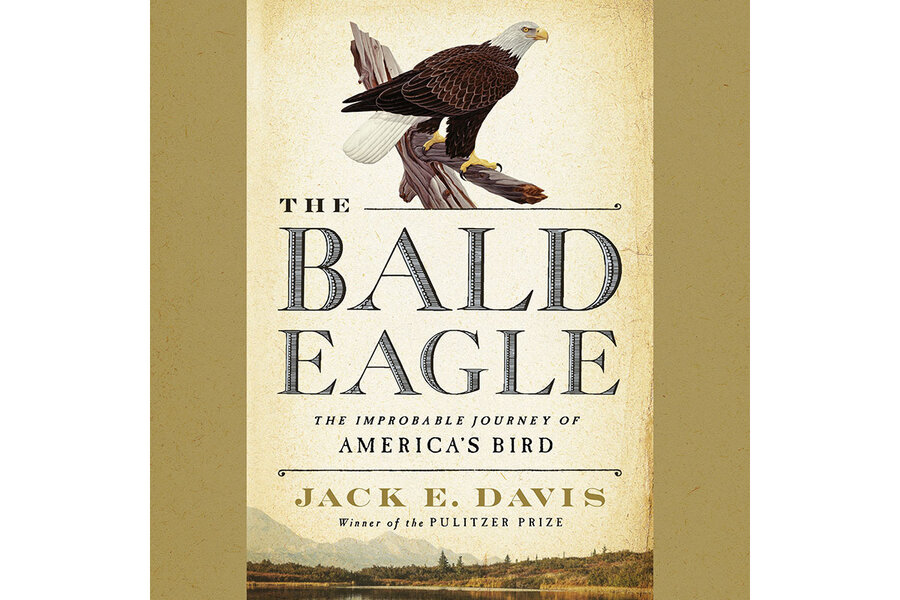What America’s treatment of the bald eagle says about the nation itself
Loading...
Except for the American flag, nothing is more emblematic of the land of the free than the bald eagle. It’s an association that dates back to the days of the Founding Fathers, and the raptor is so closely linked with the United States that it often serves as a stand-in for the nation in countless political cartoons. But the iconic creature at the center of the soaring new book “The Bald Eagle: The Improbable Journey of America’s Bird,” by Jack E. Davis, has faced its own share of struggles over the nation’s history.
Davis, author of the Pulitzer Prize-winning history book “The Gulf: The Making of an American Sea,” writes that he intends this new work to be an examination of the bird not only as a wild creature, but also as a political and cultural symbol. He begins with the latter, chronicling the six-year saga to develop the Great Seal of the United States. The version adopted in 1782 famously displays a bald eagle at its center, wings outstretched, clutching an olive branch and a bundle of arrows, representing a desire for peace and a simultaneous preparedness for war. The eagle itself was chosen because, as Davis writes, “the bald fears none, and it is capable of divine heights, in line with the ambitions of a rising nation.”
Soon after the eagle was chosen out of the abundant pool of native North American wildlife to represent the new nation, it became a widely used and beloved symbol, eventually serving as everything from a popular mascot for sports teams to the highest achievable rank within the Boy Scouts of America.
Yet as the American public revered the symbol, the bird itself was seen as a villain. Farmers in the 19th century loathed the birds, believing that they killed livestock, and a strange but popular myth claimed that the raptor could snatch up helpless human babies. In reality, bald eagles can only lift a maximum of 5 pounds and their scavenging habits likely made them scapegoats for killings perpetrated by mammals. At the time, the raptors were killed in astonishingly high numbers.
It was an uphill battle bringing reverence for actual eagles in line with admiration for the symbol, especially as the bird’s numbers plummeted. The bald eagle wasn’t eligible for protection under the Migratory Bird Treaty Act of 1918 since it was falsely claimed that it didn’t migrate, but pressure from a dedicated group of activists brought about a change. The Bald Eagle Protection Act in 1940, the first federal law applied to a single species, made it illegal to kill, harm, or possess any body part of the most American of birds.
Unfortunately, just as bald eagles were shielded from human aggression, they faced another, more insidious threat. This was the era of the insecticide DDT. Sprayed copiously on fields, the chemical crept into waterways and into fish, the eagle’s main source of food. The result, as cautioned by Rachel Carson in her graceful, yet firm 1962 environmental book, “Silent Spring,” was the thinning of eggshells, making fewer wild bird clutches viable. The chemical was banned a decade later and the Clean Water Act made the eagle’s natural habitat more hospitable. Without those actions and the extensive efforts to restore the bird’s numbers, which Davis details in “The Bald Eagle,” the raptors could have gone the way of the dodo – a chilling thought.
It’s unthinkable that such a lofty bird could ever face extinction, let alone stare down that possibility twice, both times at the hands of humans. Its loss would have been devastating to the North American ecosystem and to Native American cultures, which attributed spiritual values to the bird long before it was a national mascot. But the future of the bald eagle now seems relatively secure. Today, as Davis writes, “harming America’s bird would be like burning the American flag.”
Though the organization of the book is puzzling, “The Bald Eagle” is compelling and paints a dignified portrait of the famous bird, within and outside of American culture. The author’s occasional playful tone lightens the mood during its darker moments and even helps to underline the hypocrisy of the treatment of this bird of prey, simultaneously esteemed and maligned.
Although the book is more cultural history than natural history, the bald eagle and its impressive abilities are highlighted. This is a history that turns the tables on Americans; the creature that embodied the scrappiness of the early nation is now a model of resilience we can only hope to emulate.








